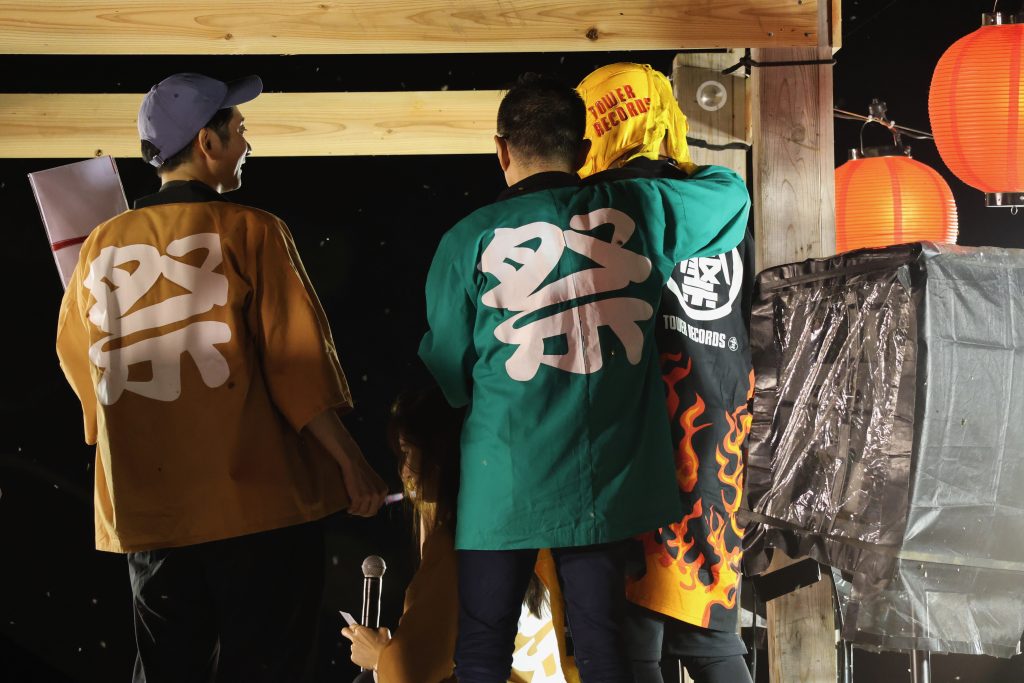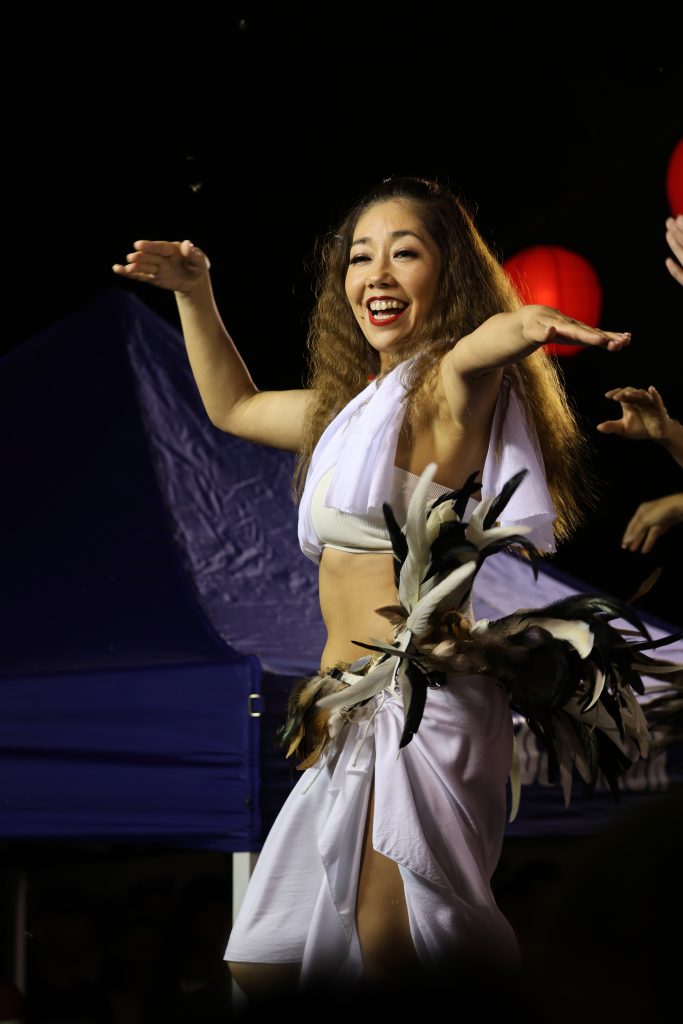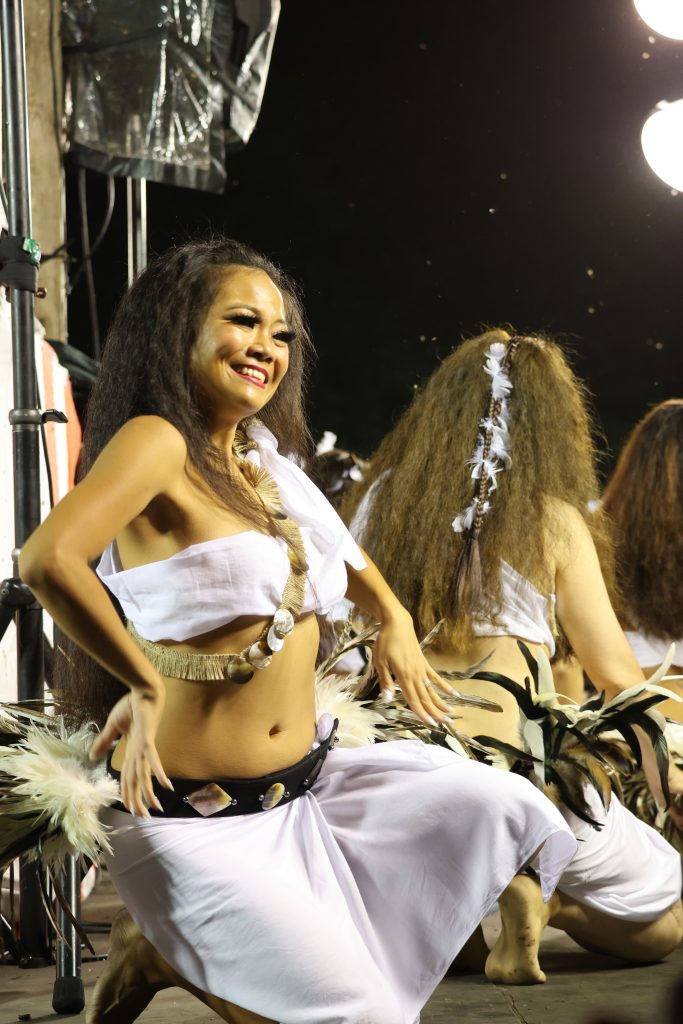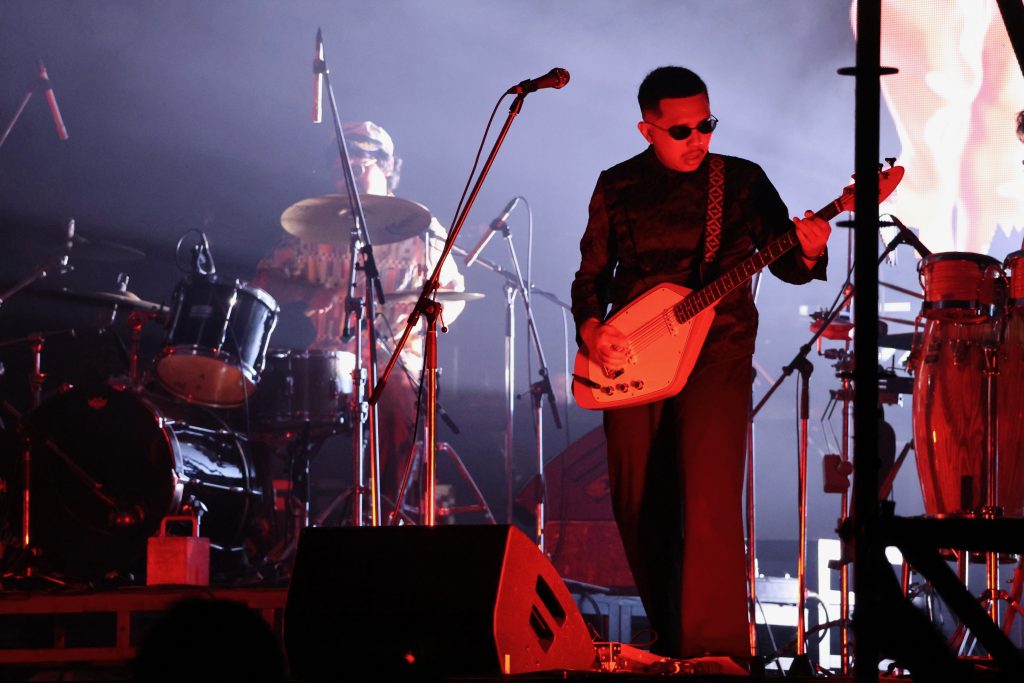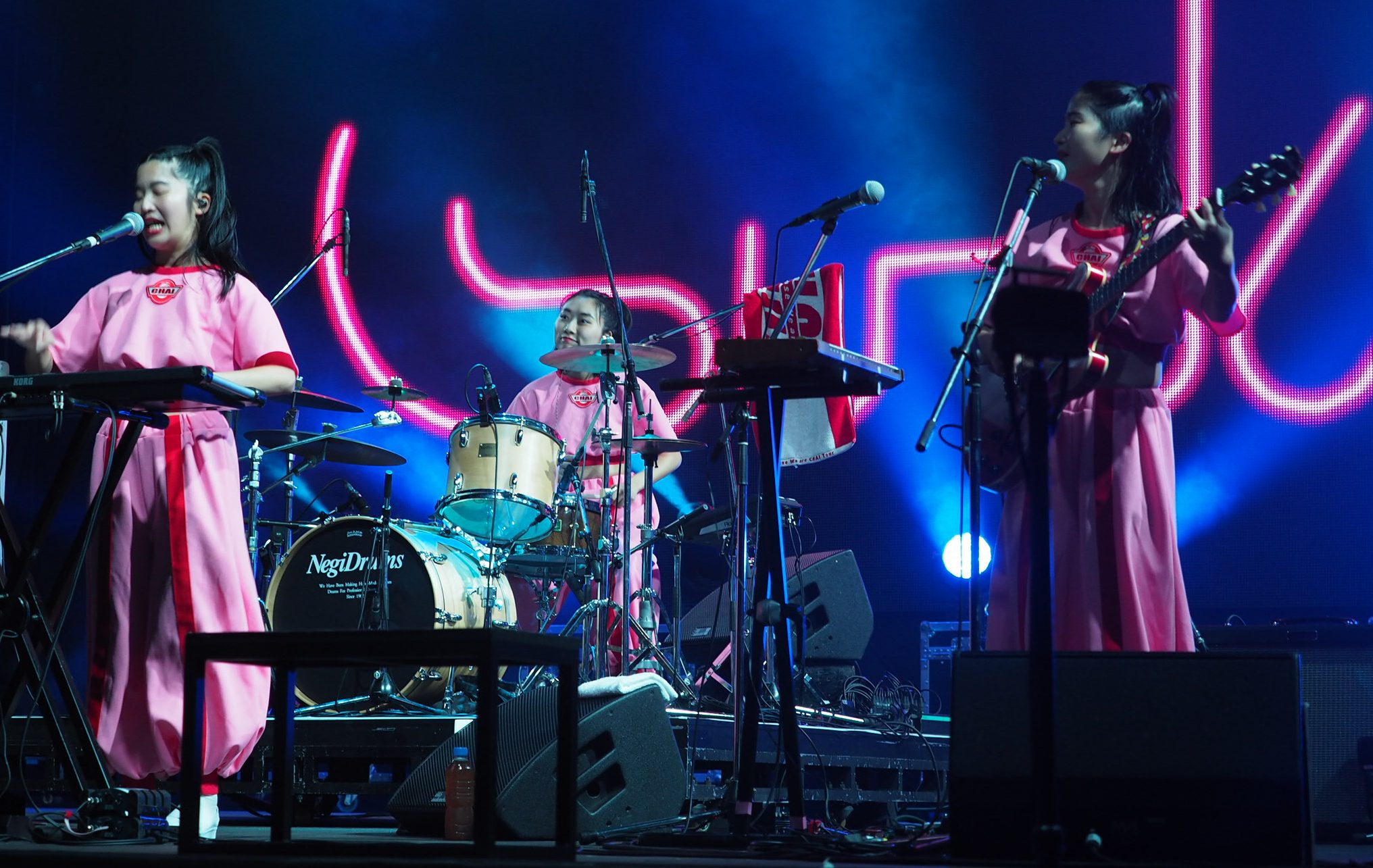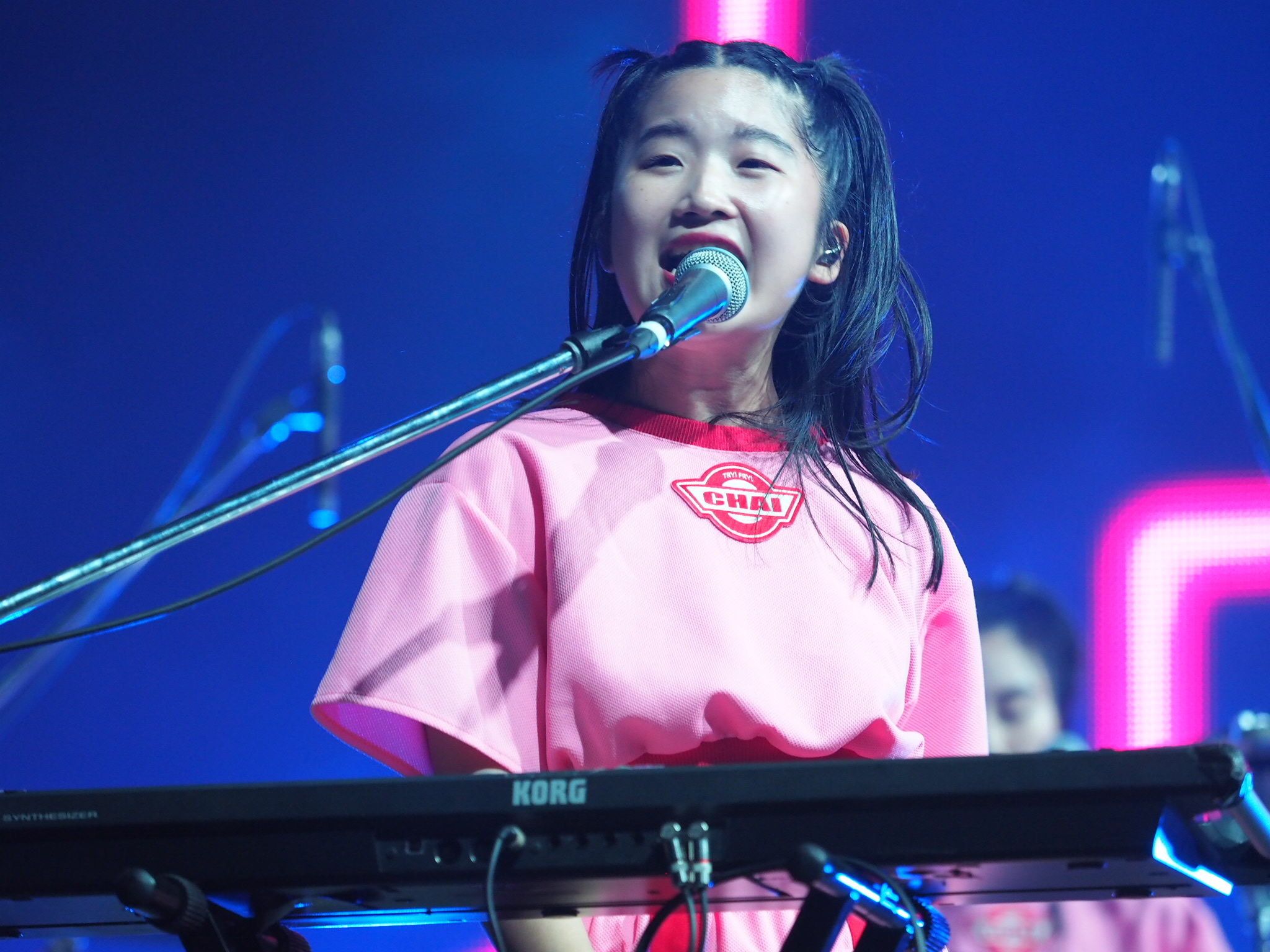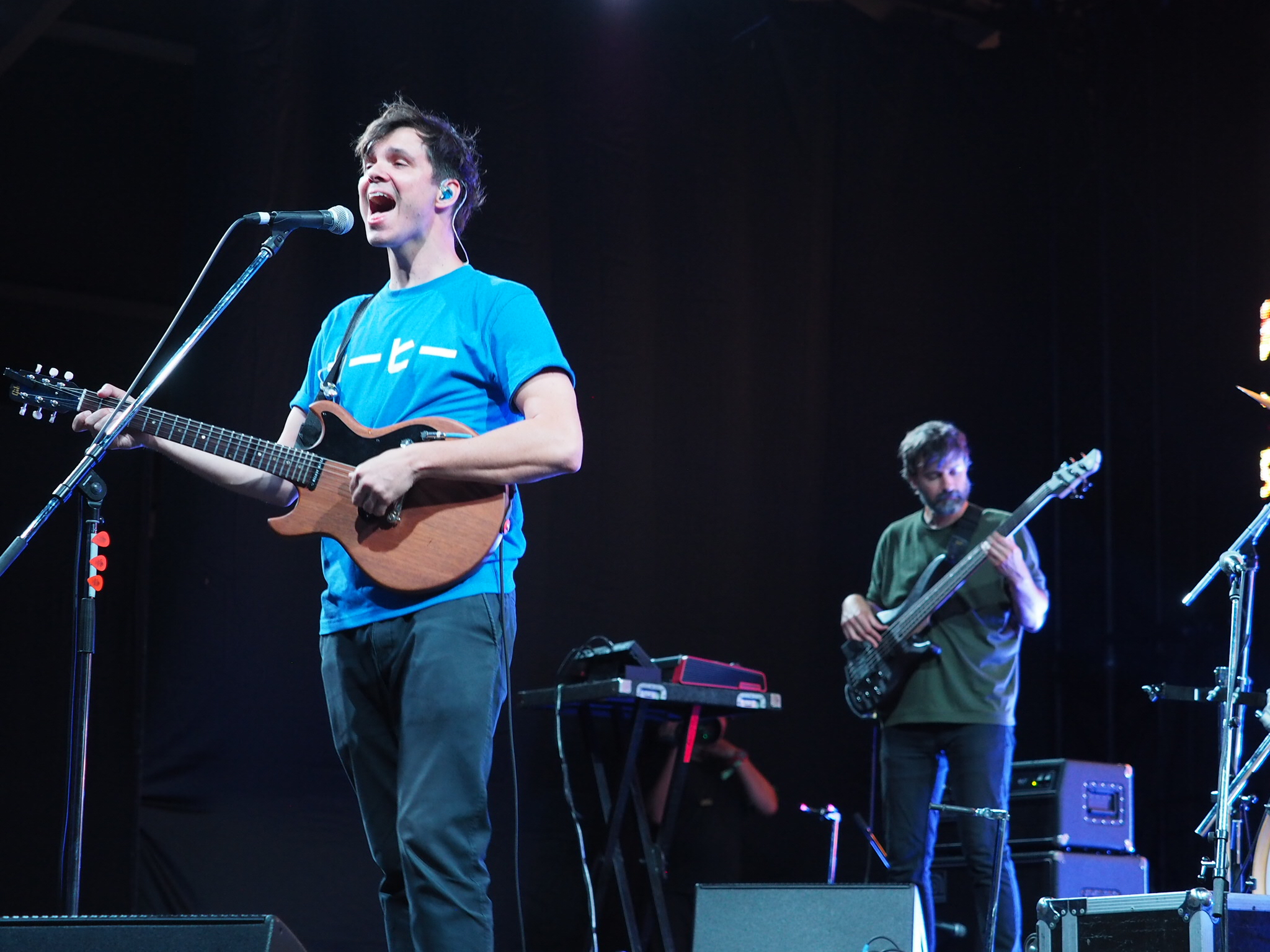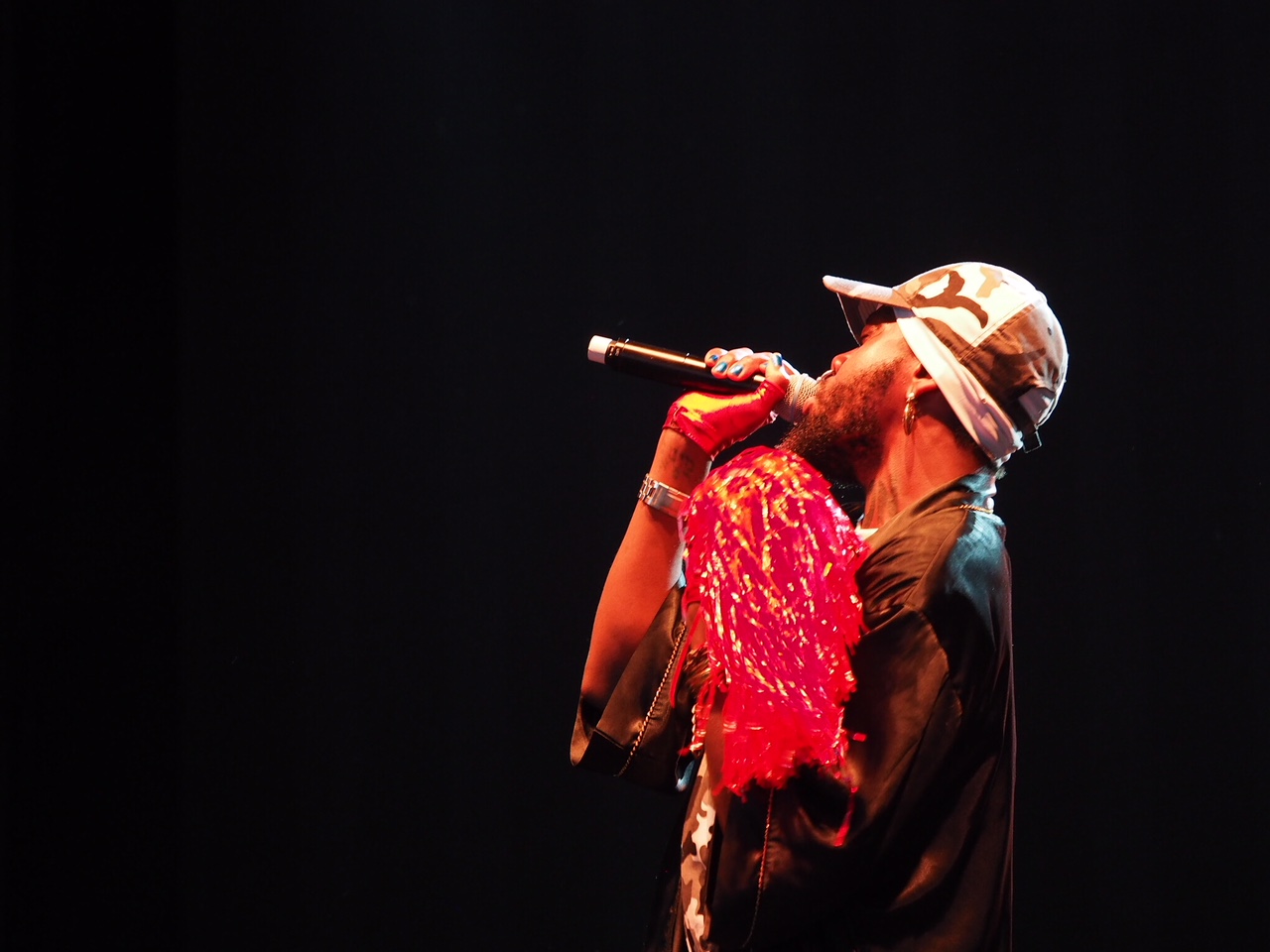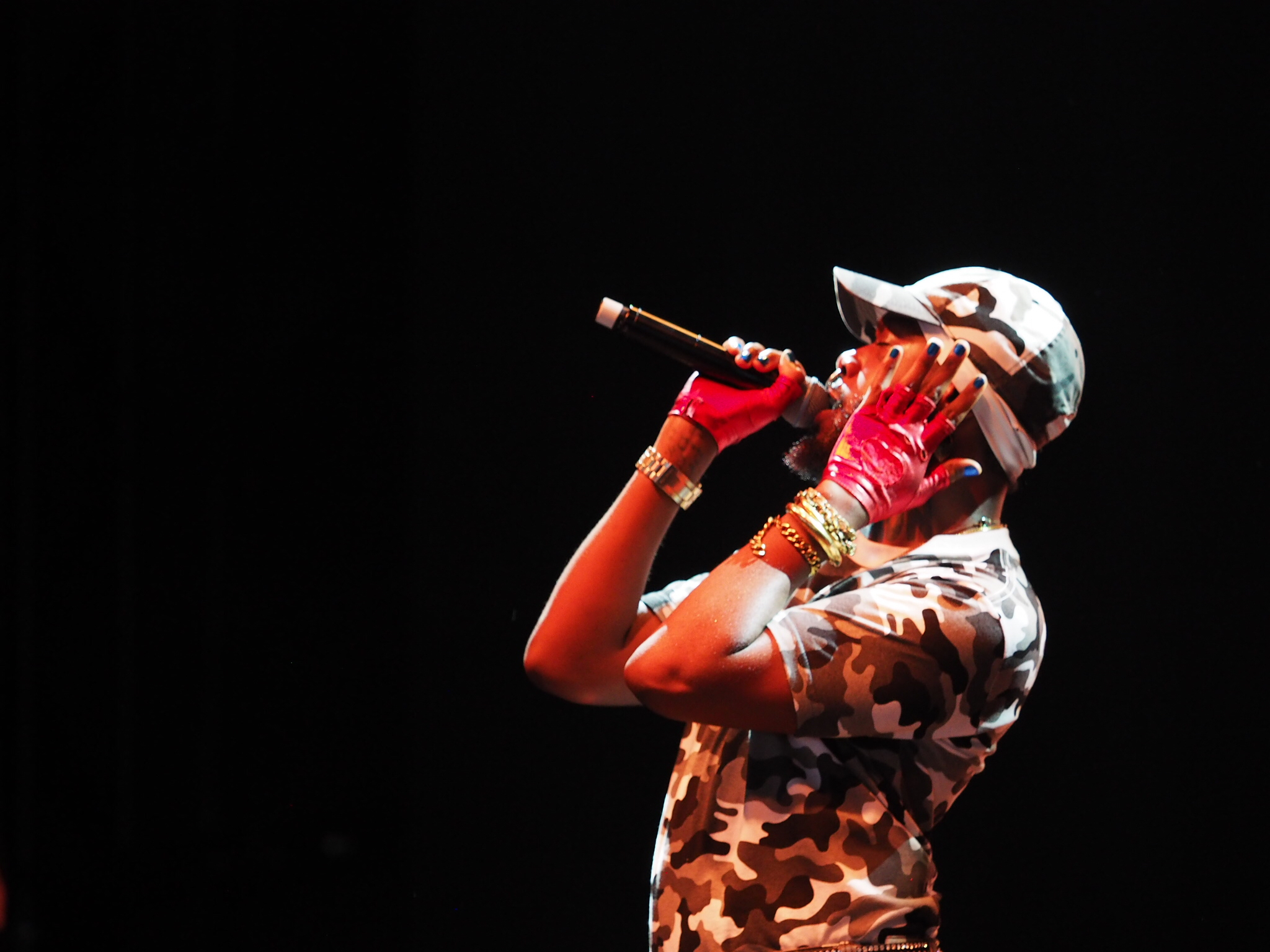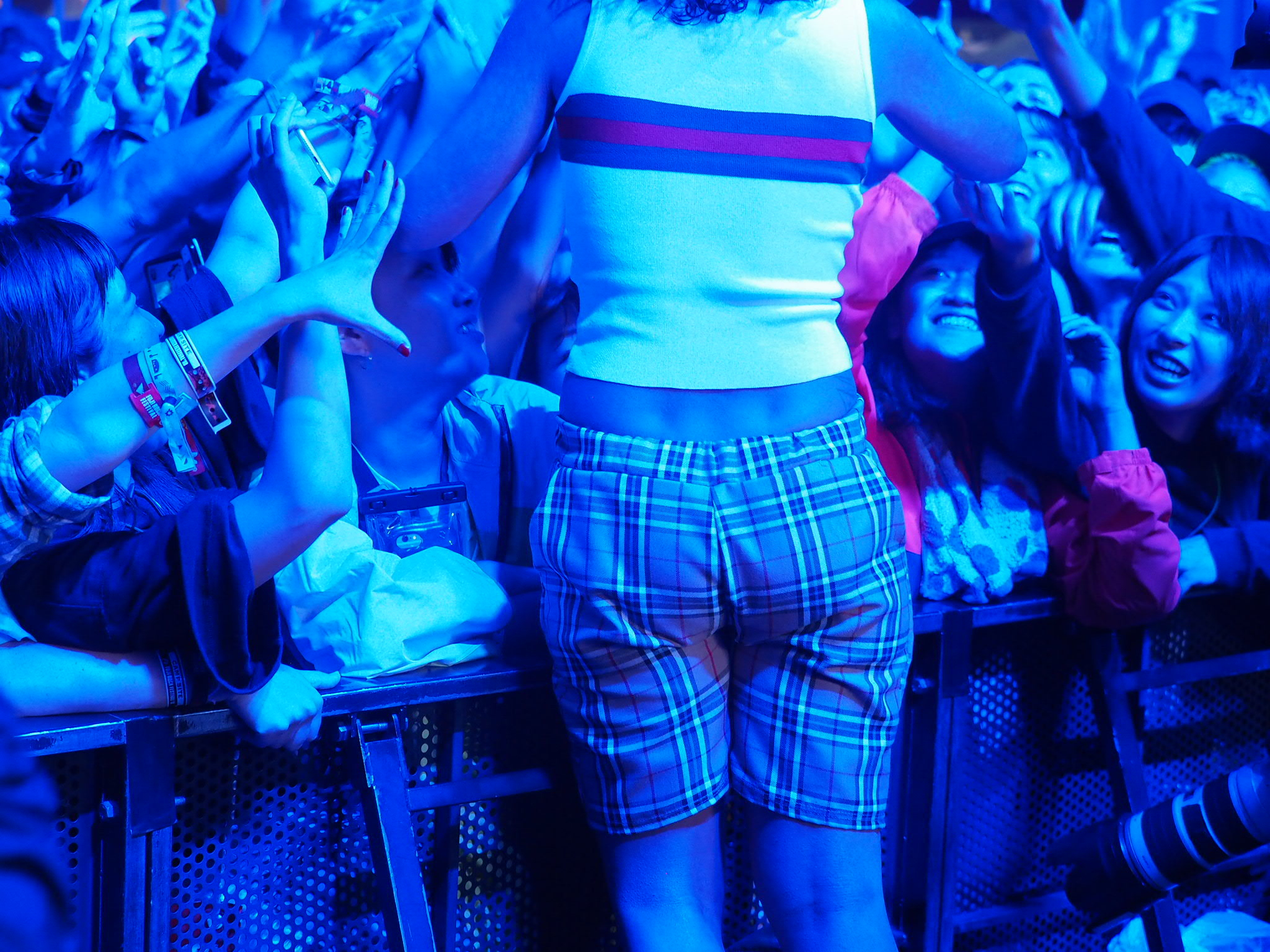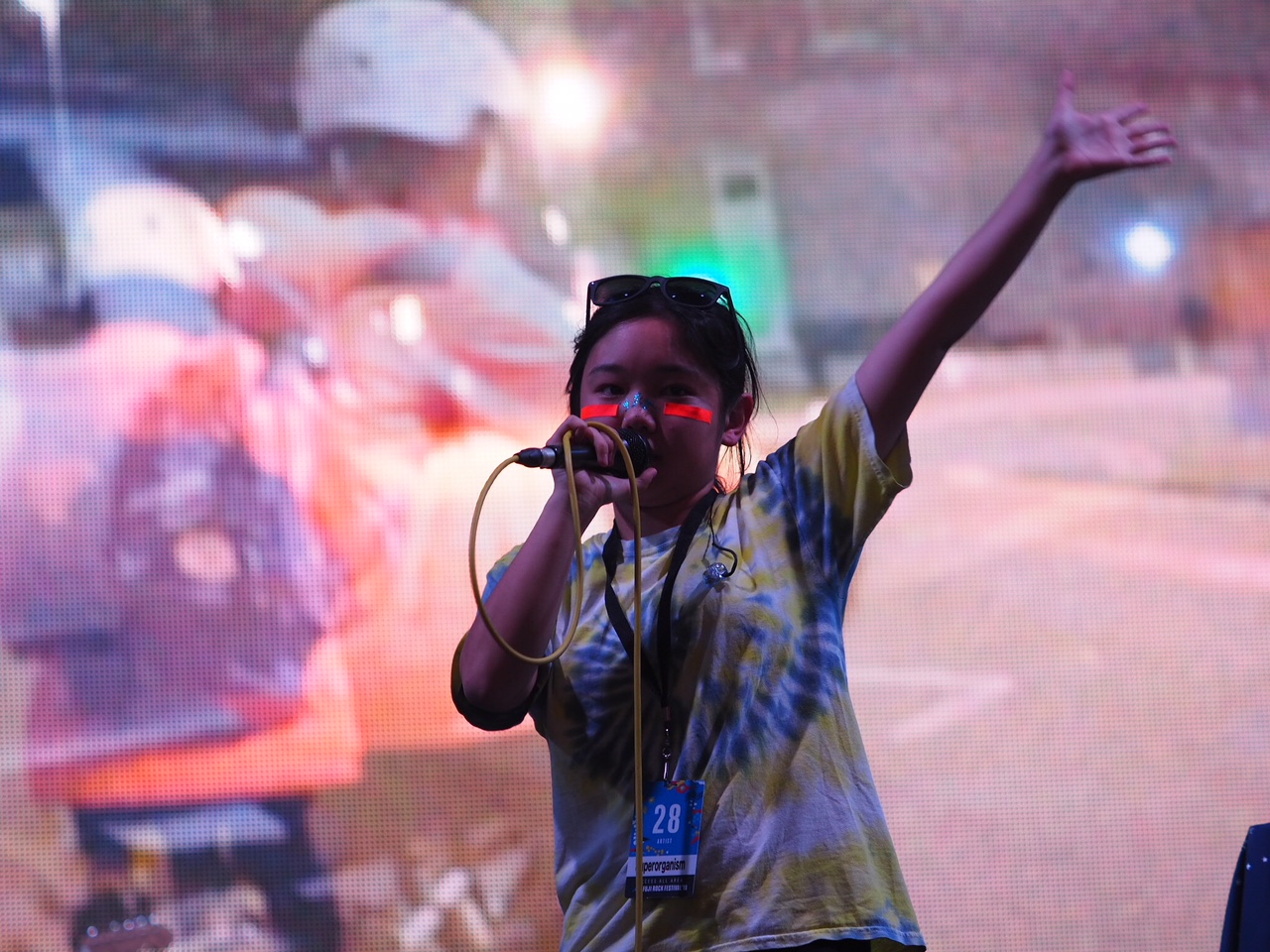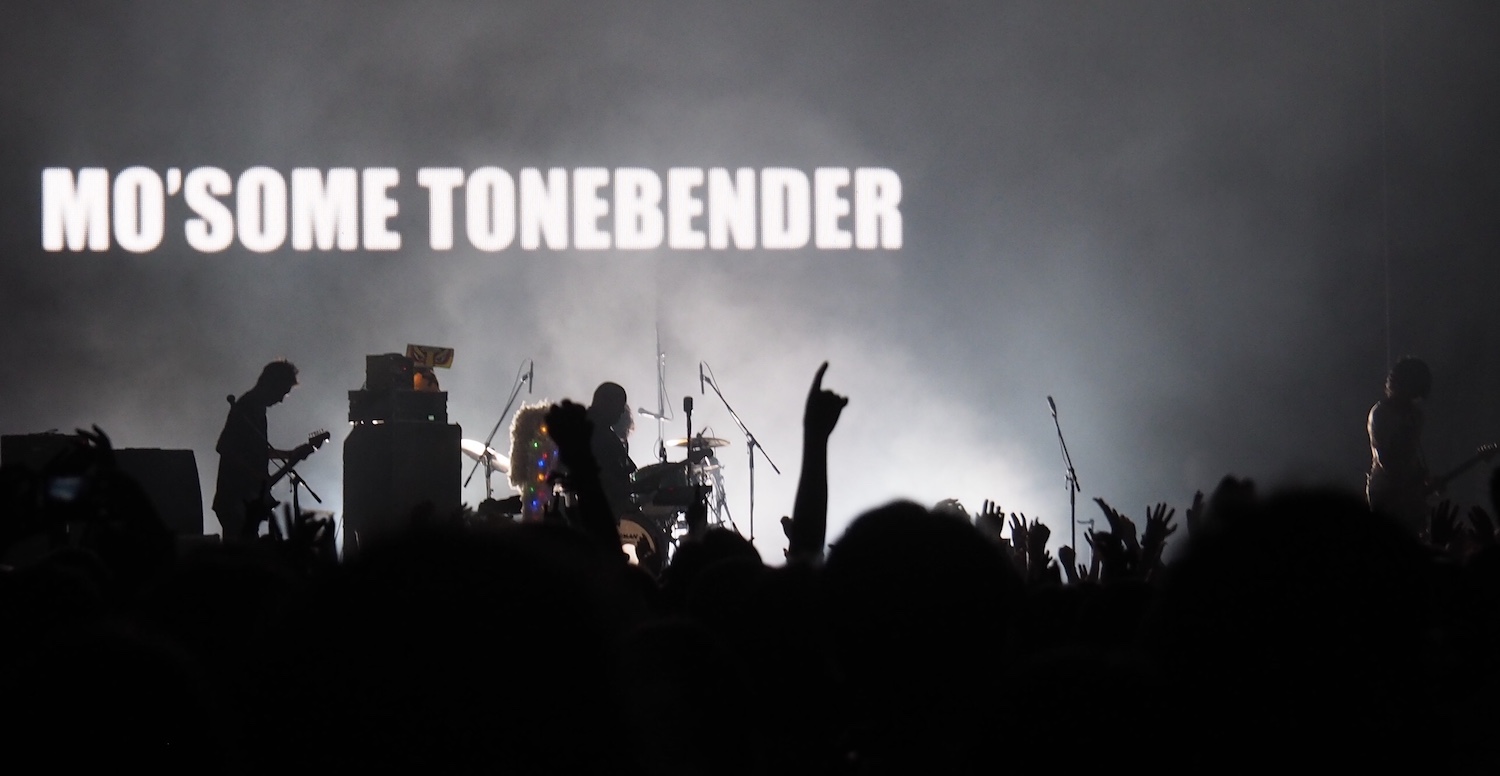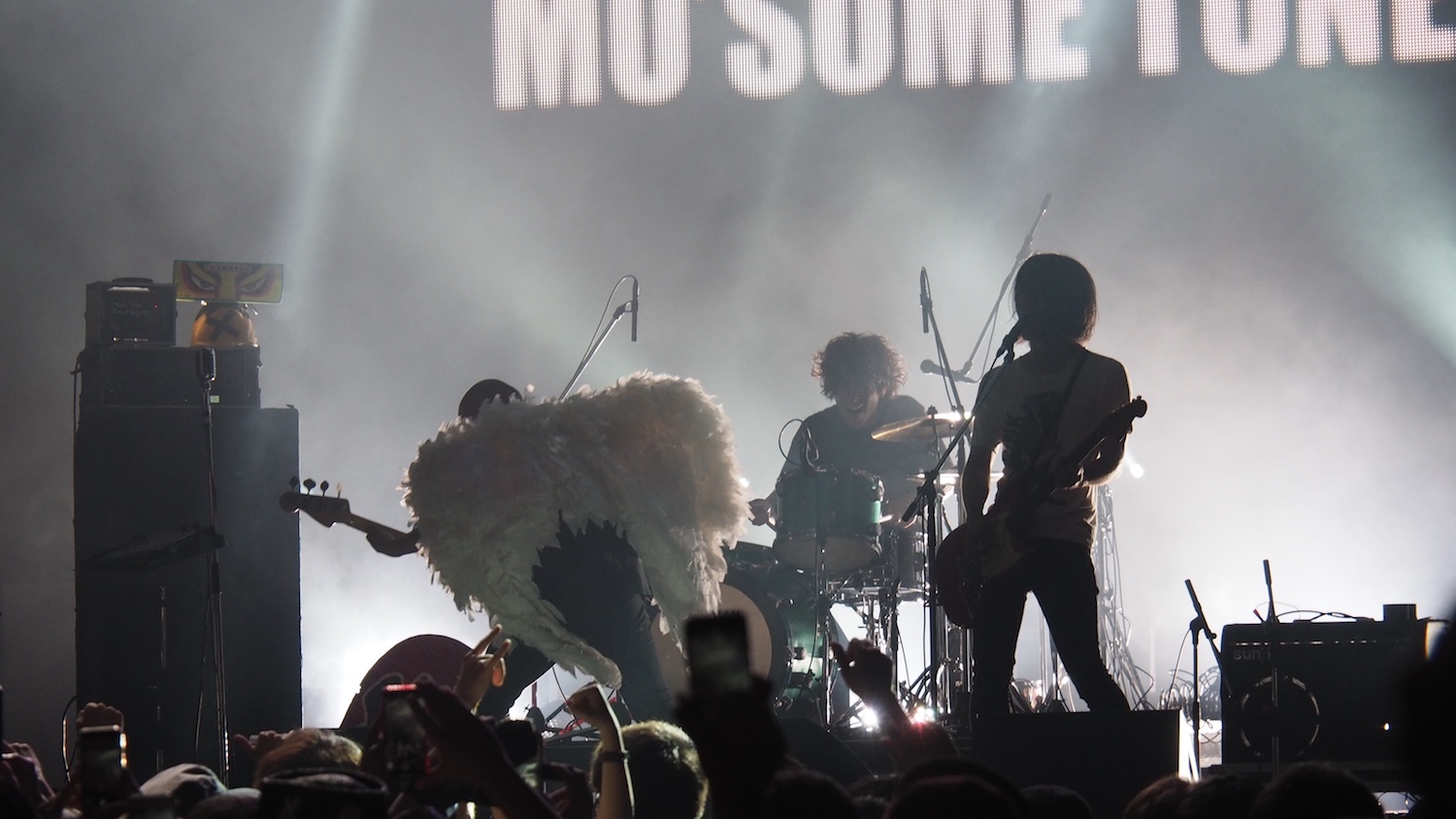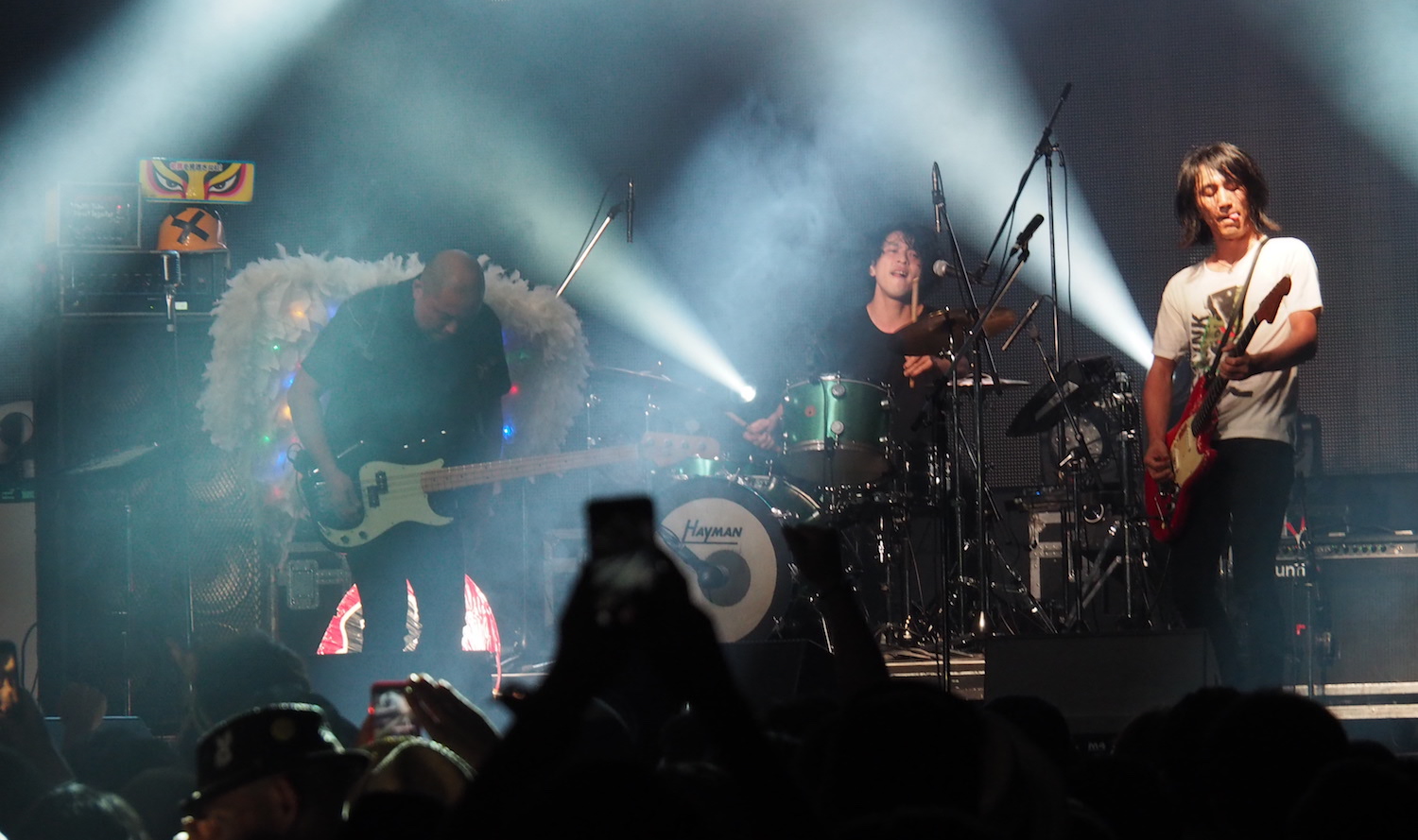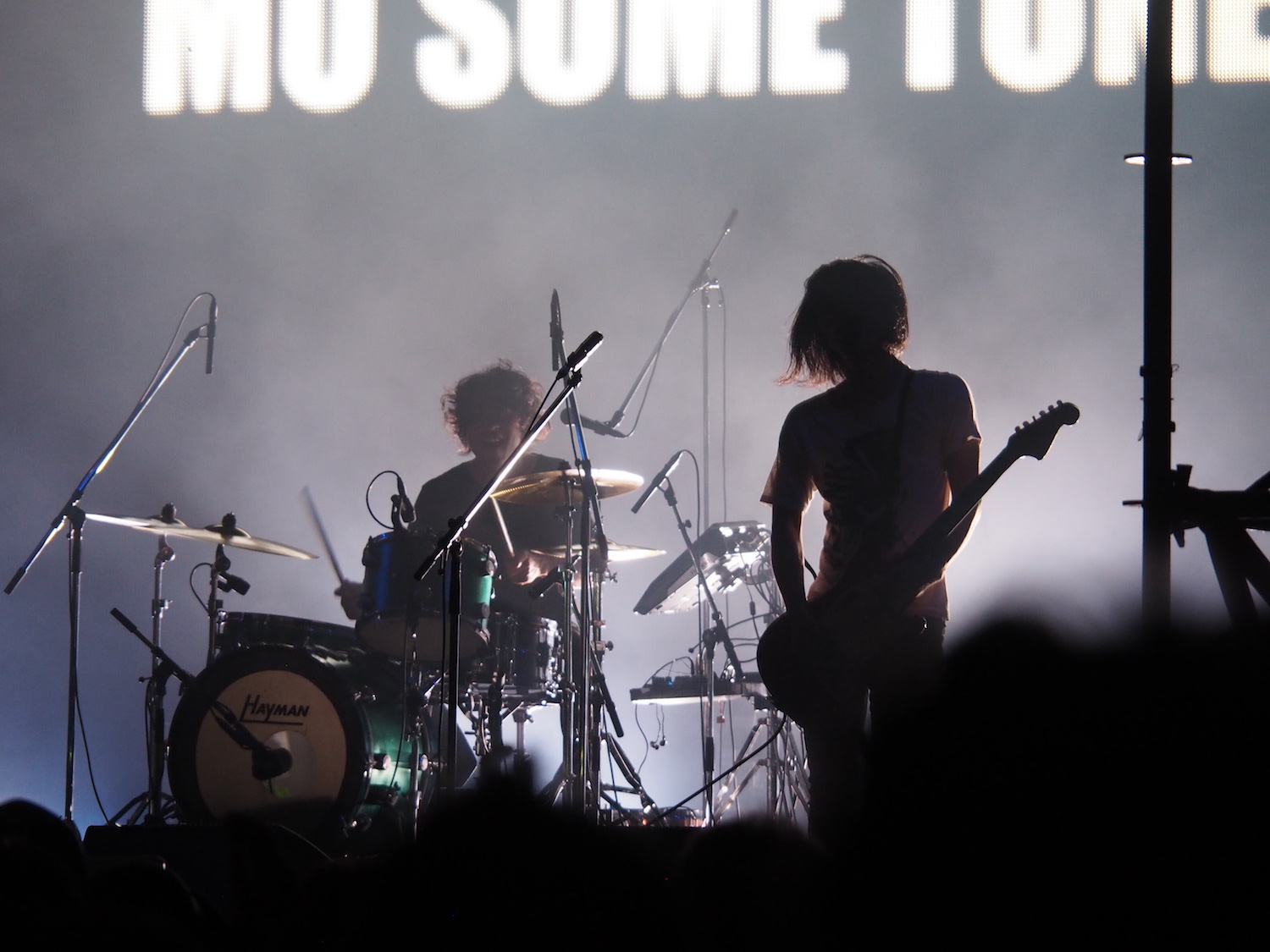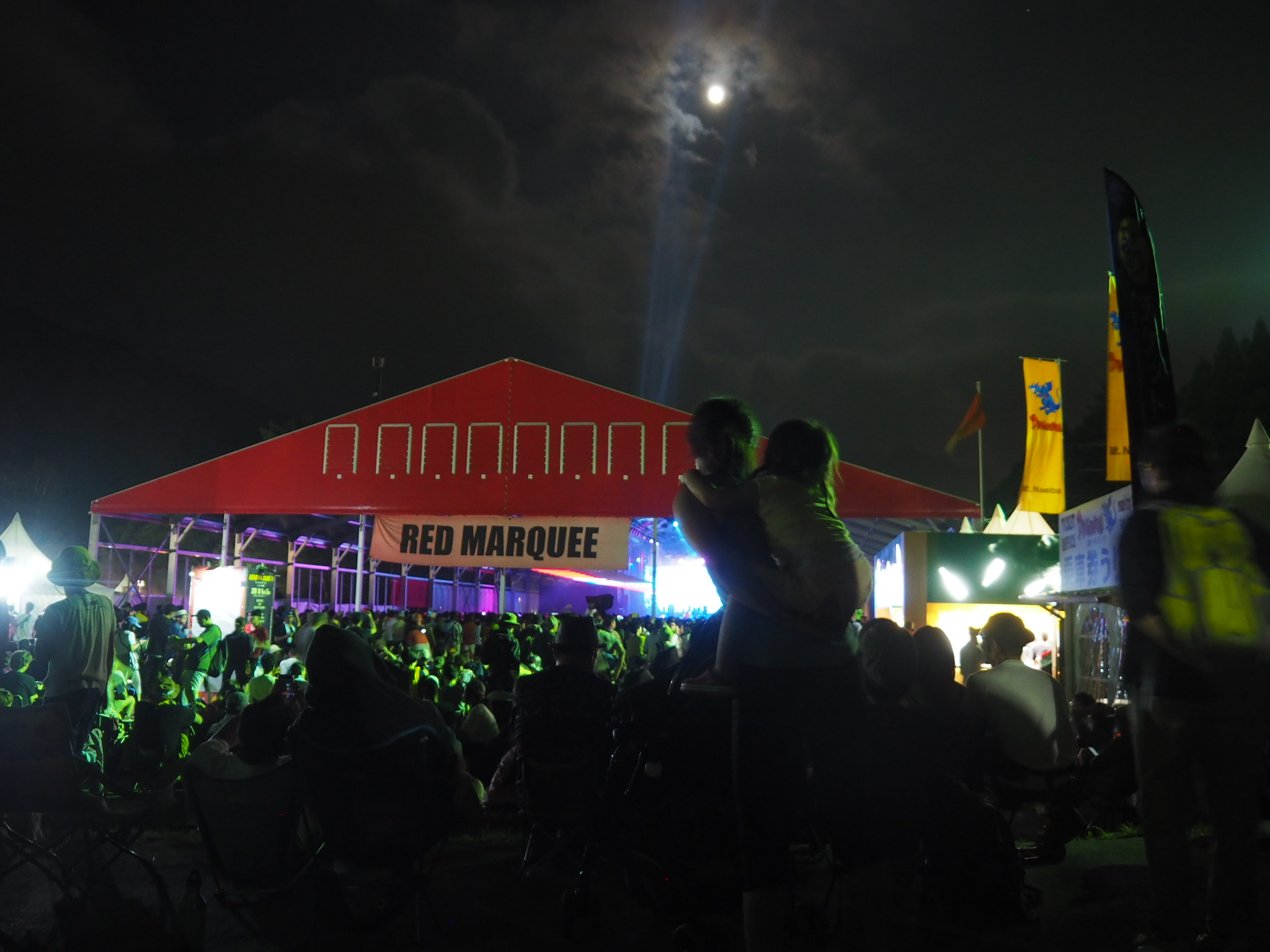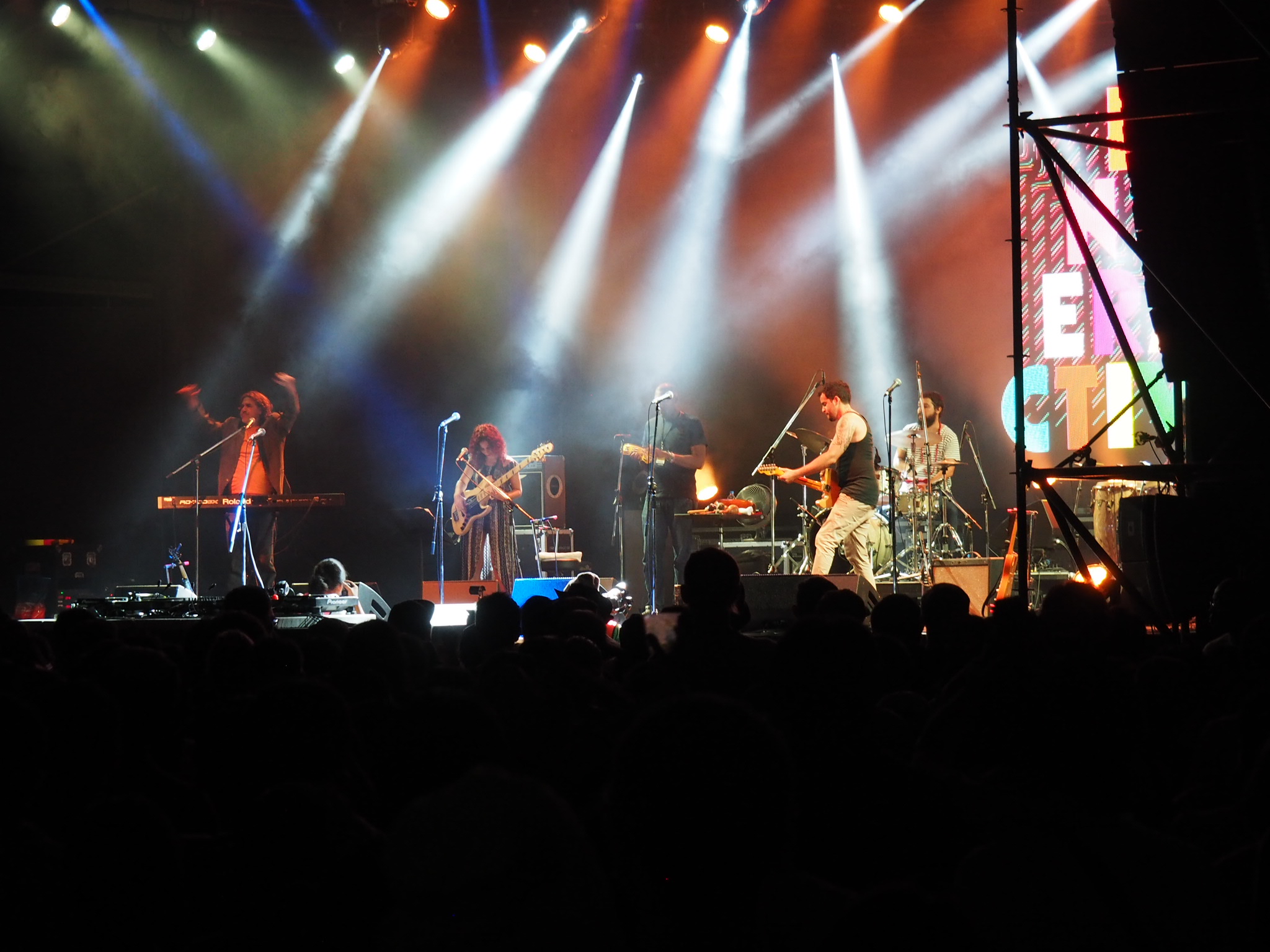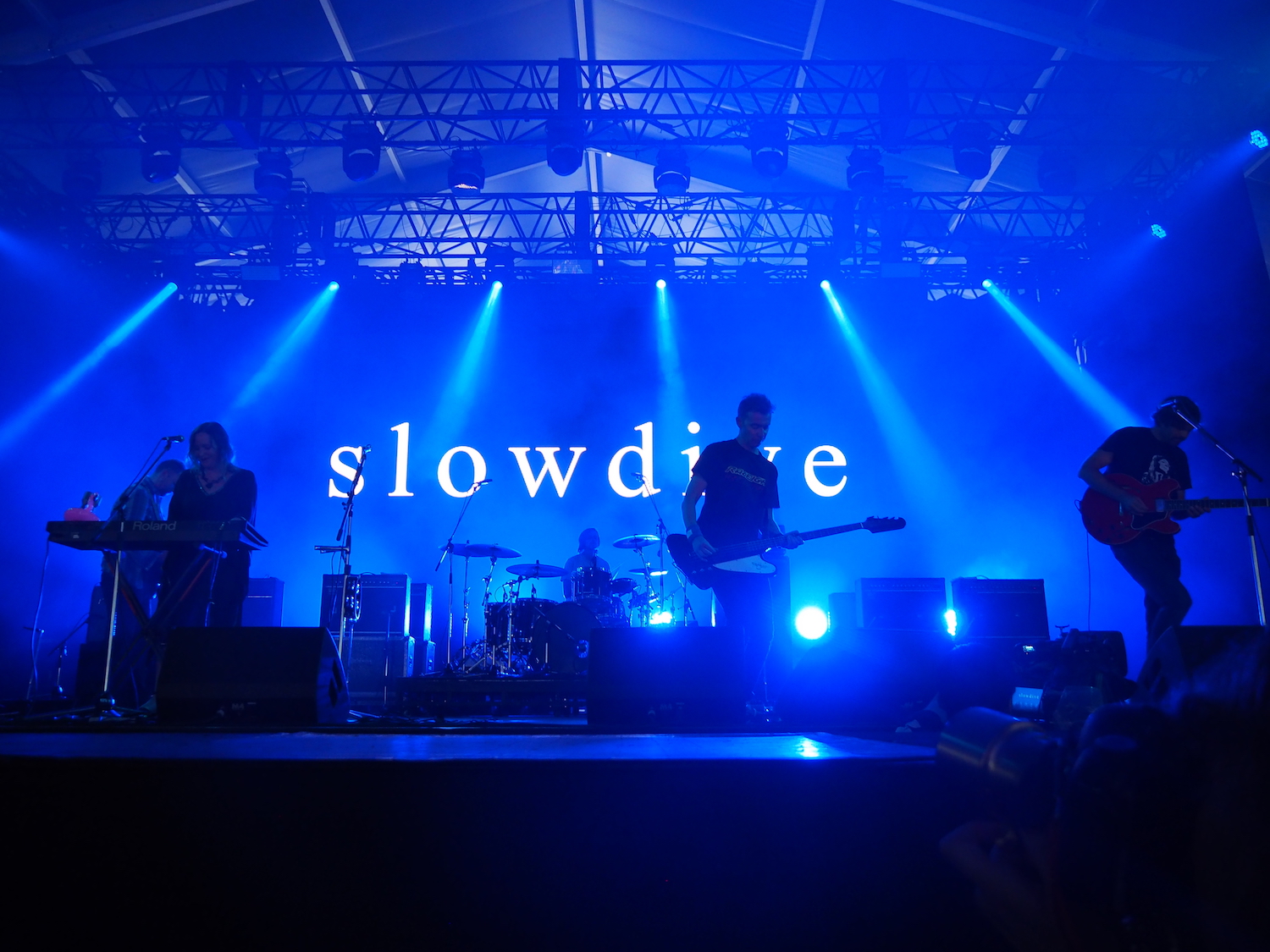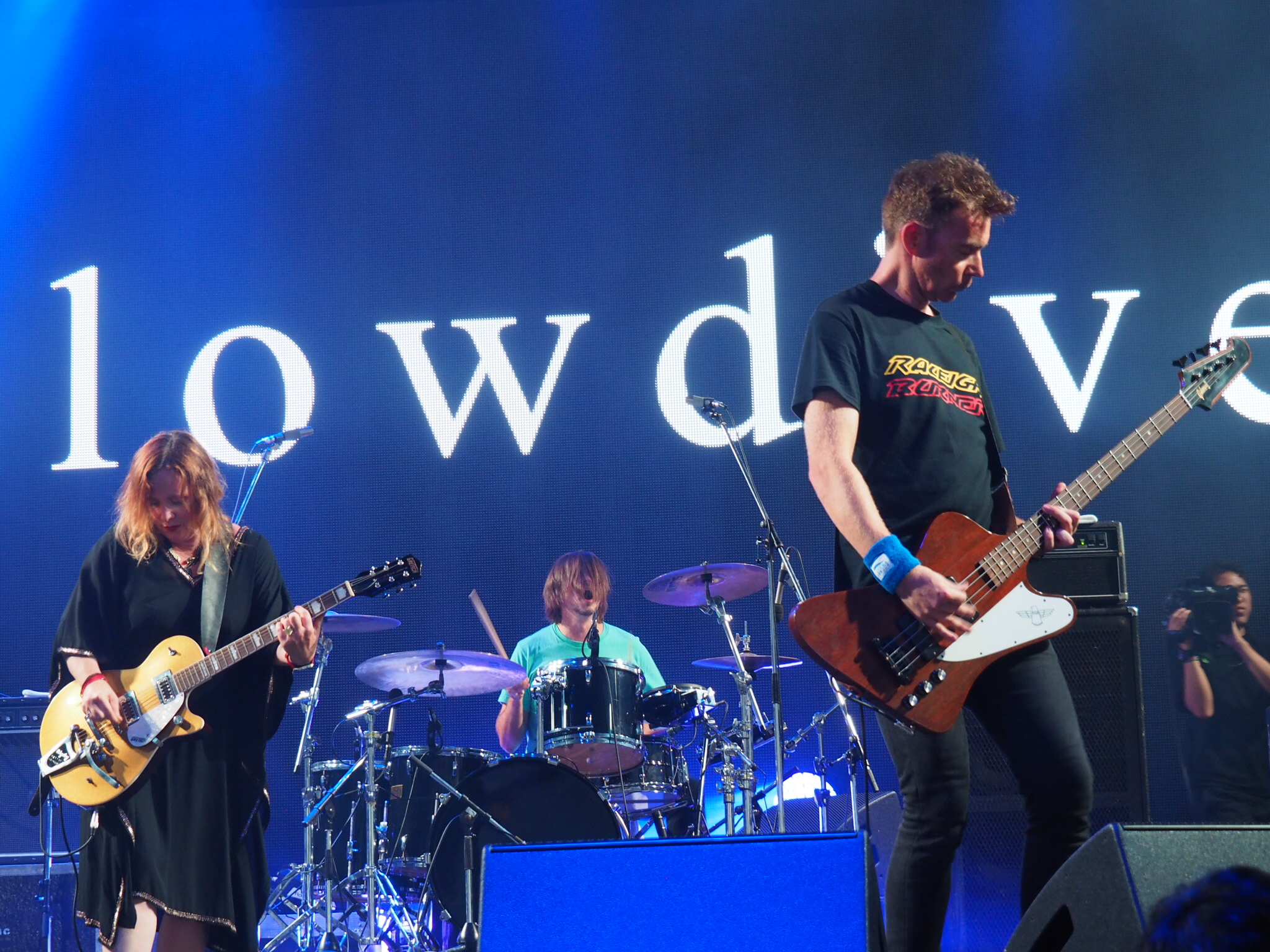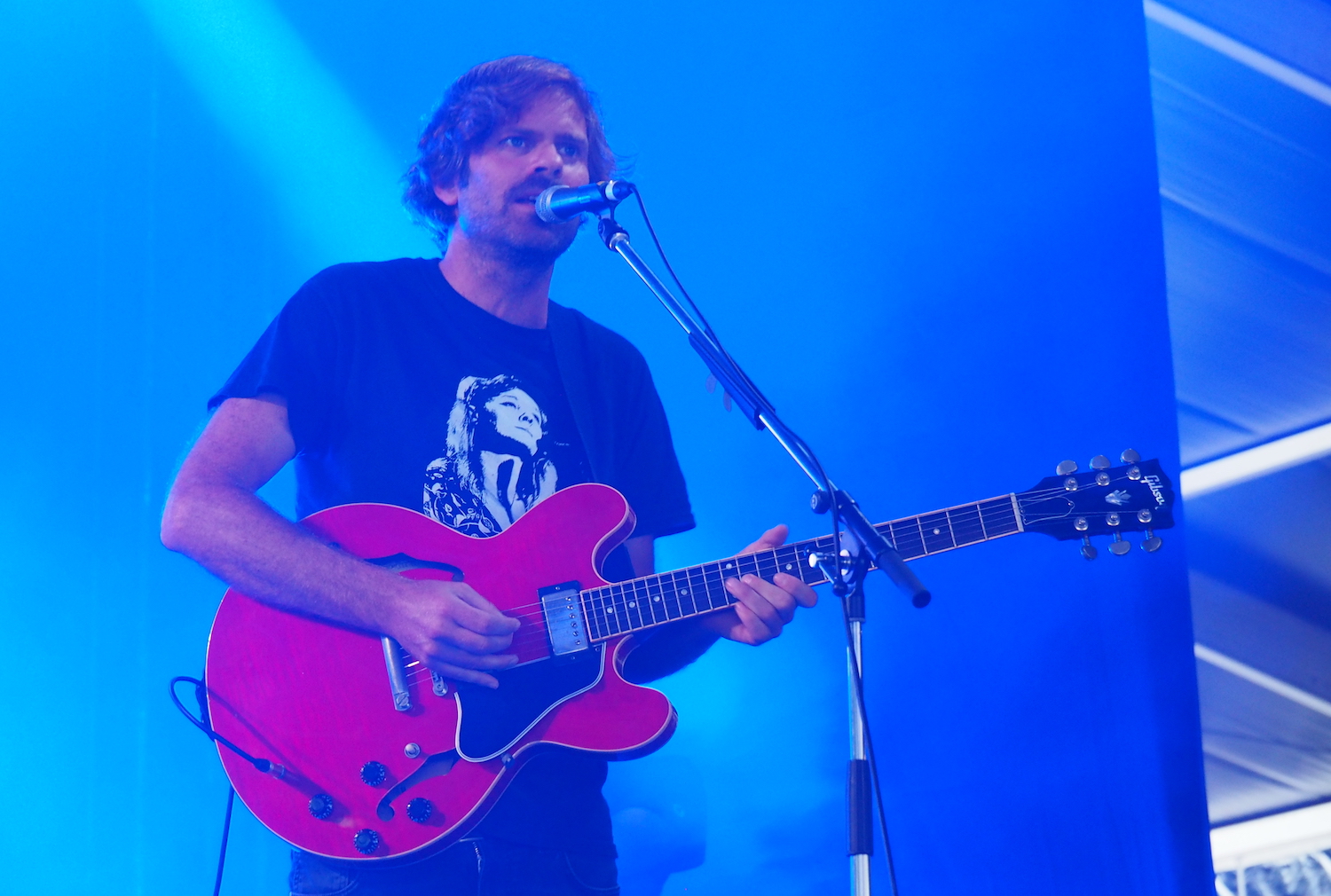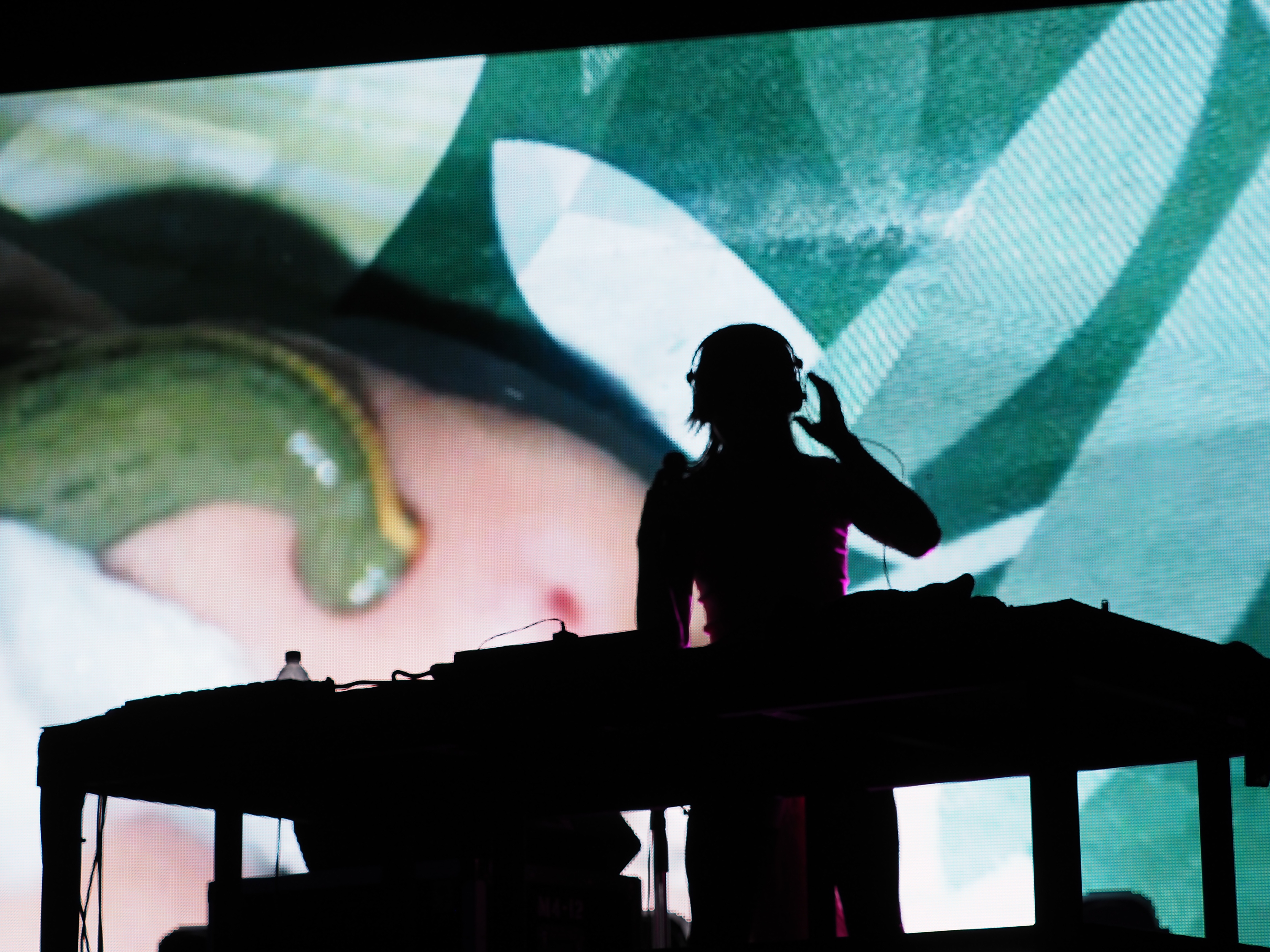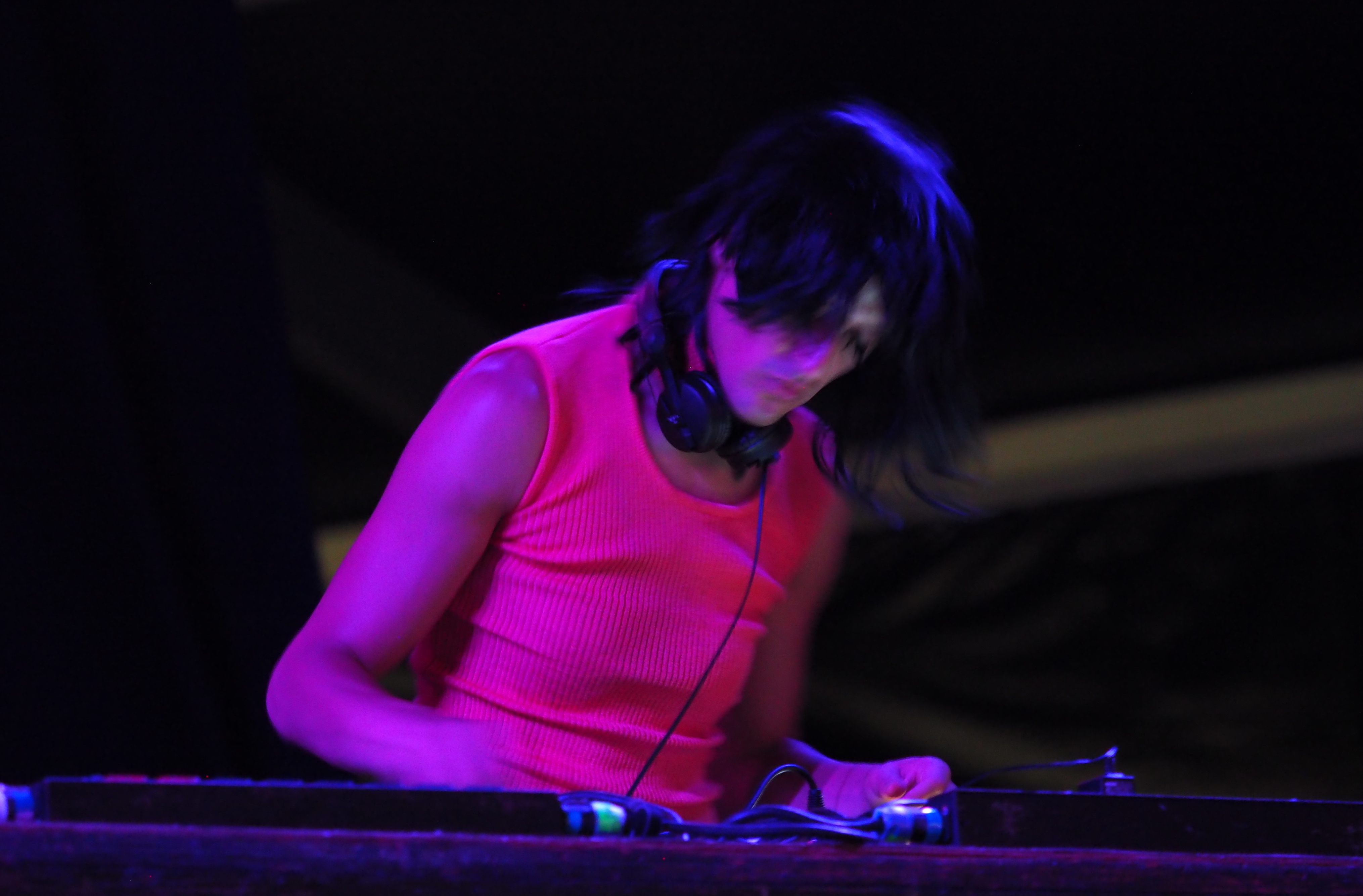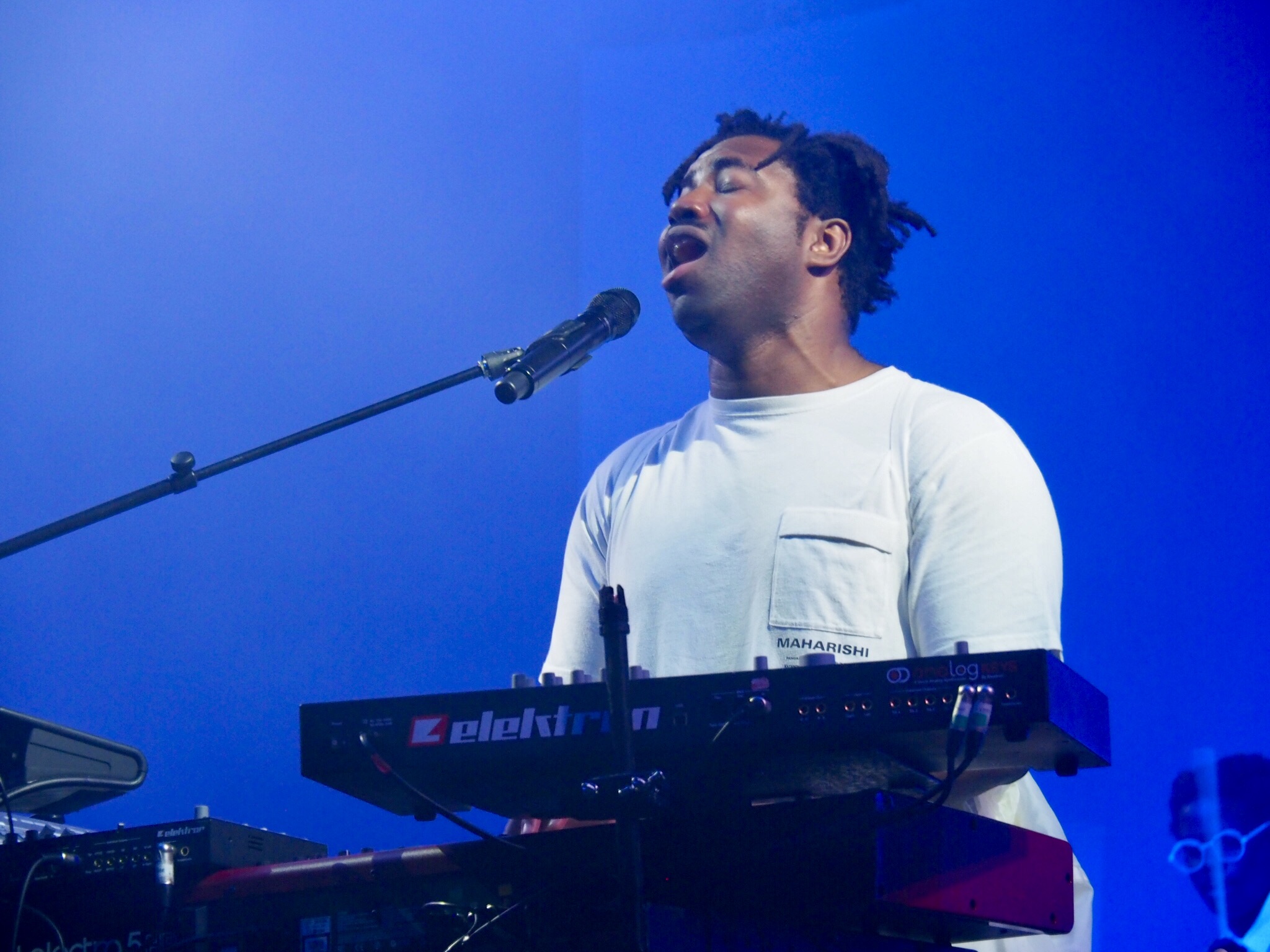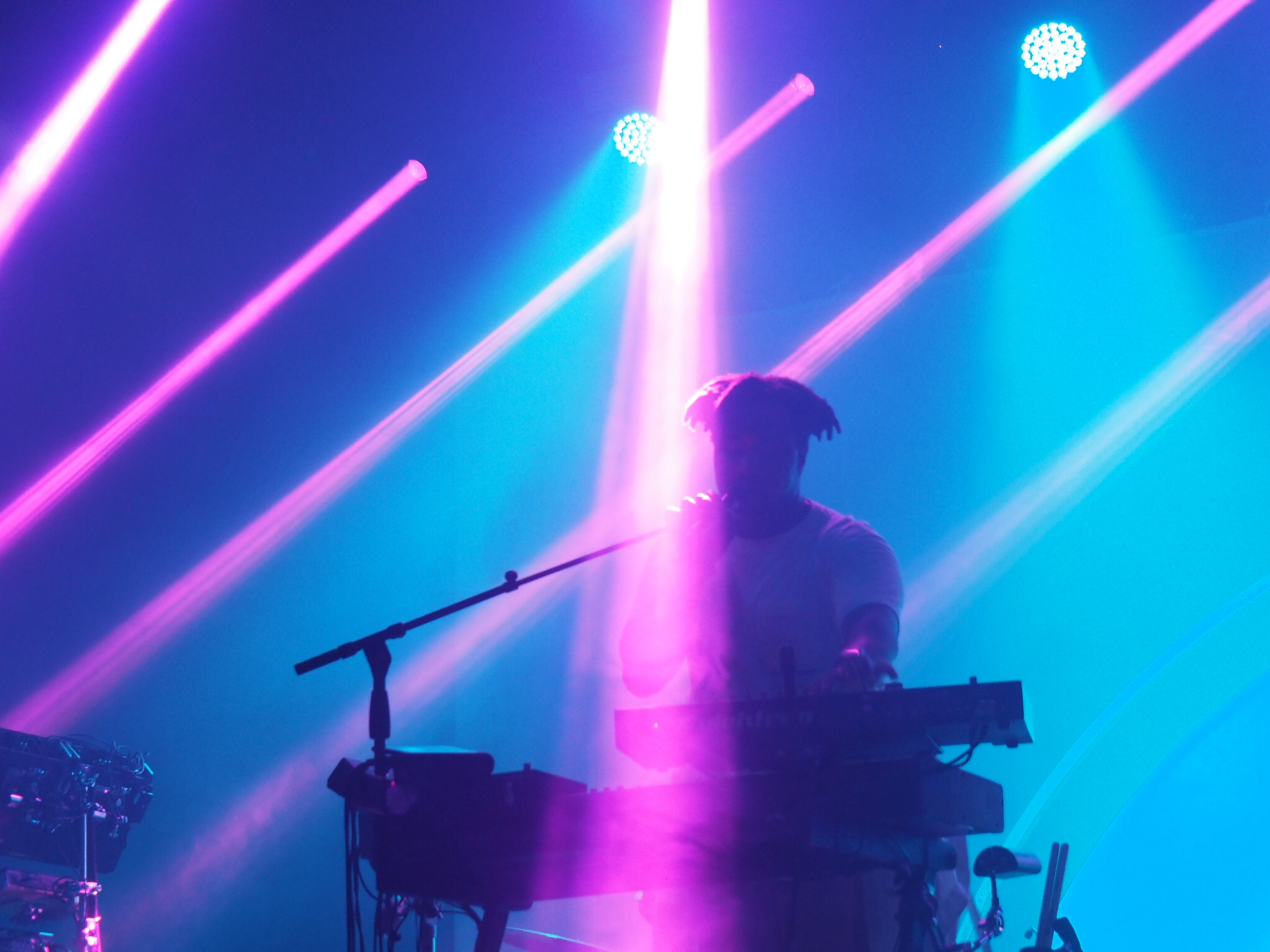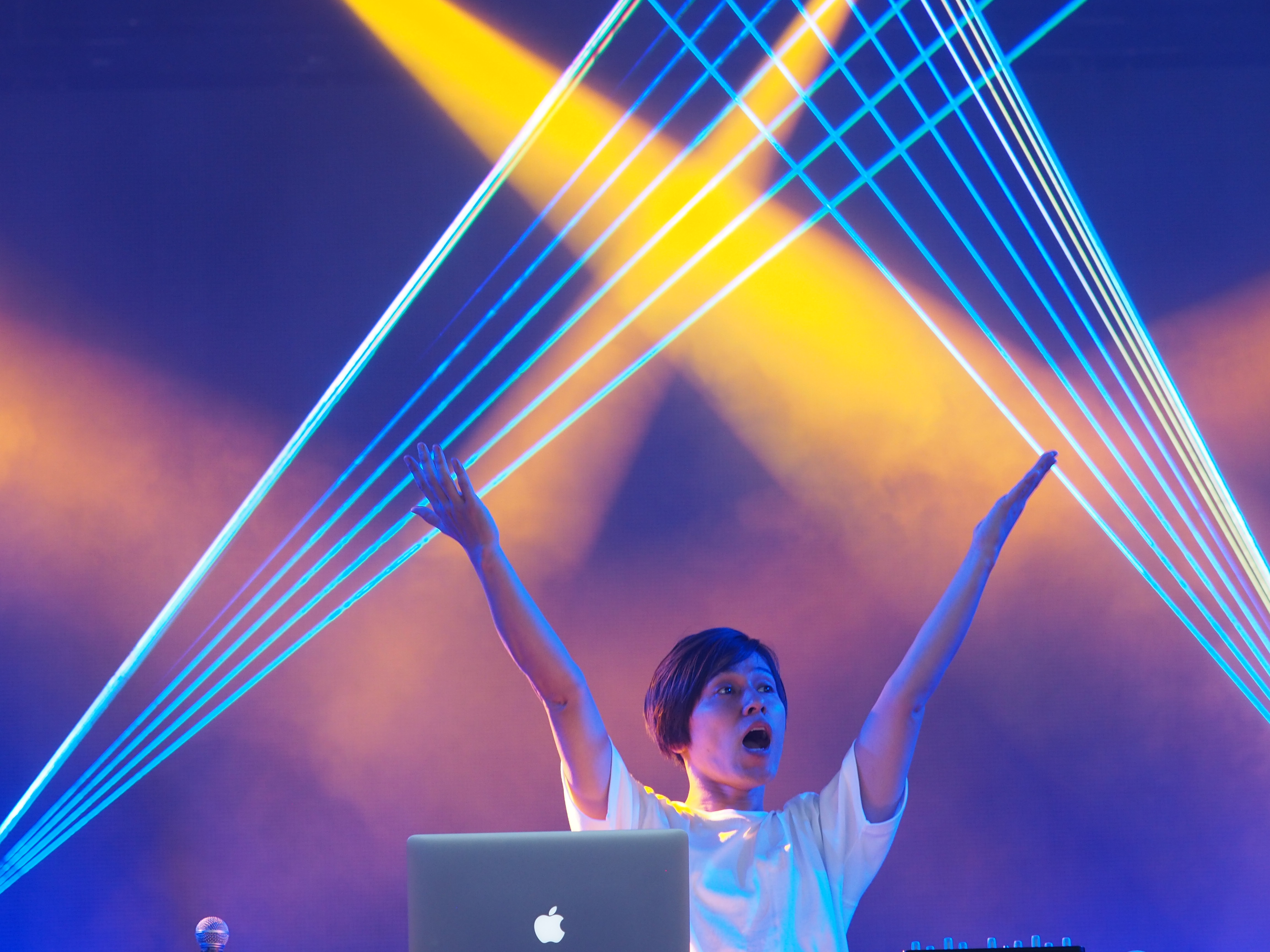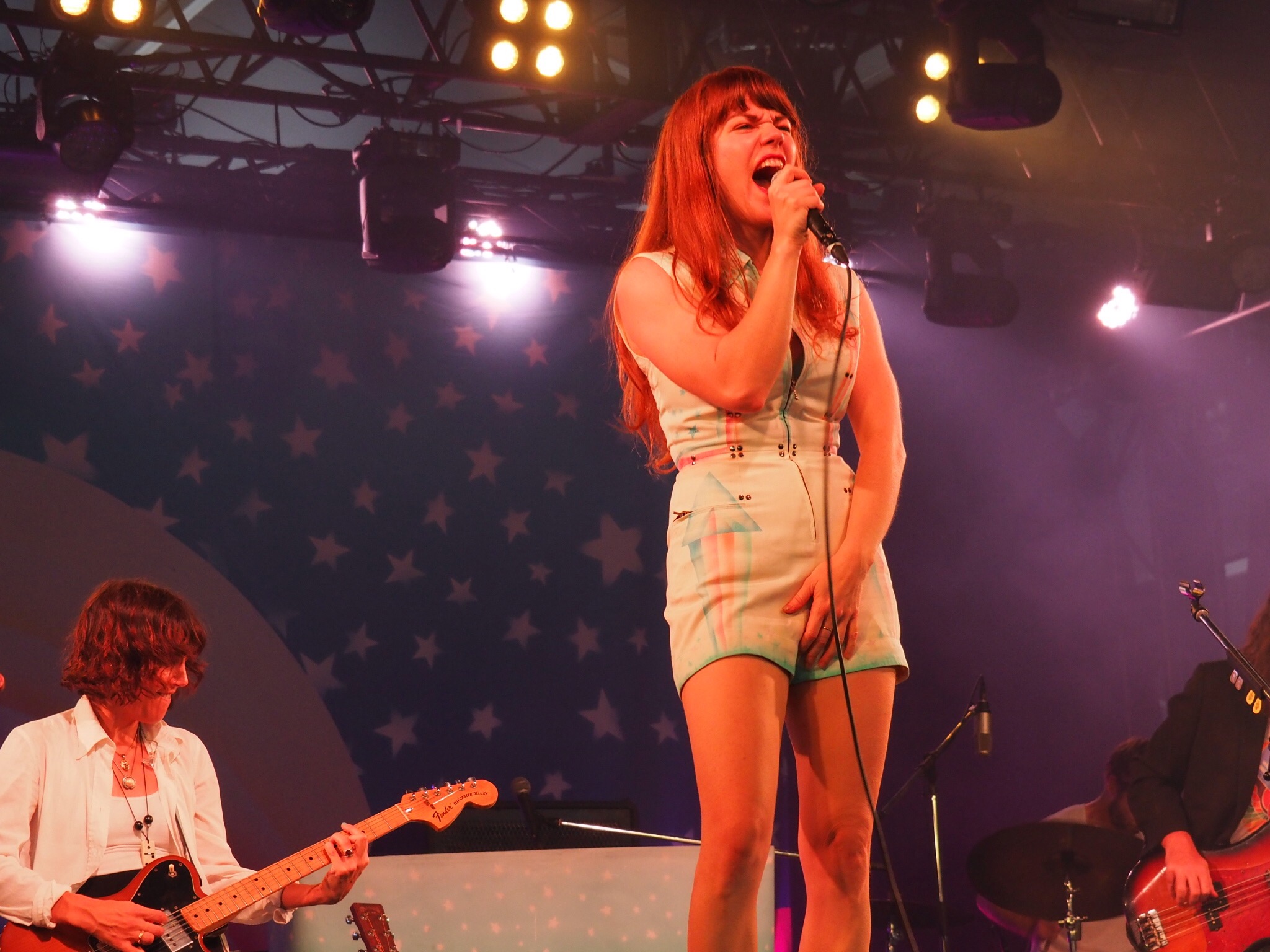Friday night’s all right for …
Mike Hadreas, aka Perfume Genius, ruled the Red Marquee around dusk as the sky outside turned purple. A fitting color considering Hadreas’s dramatic stage presence and the melodramatic tone of his songs, which range from gentle piano ballads to full-on glam rock.
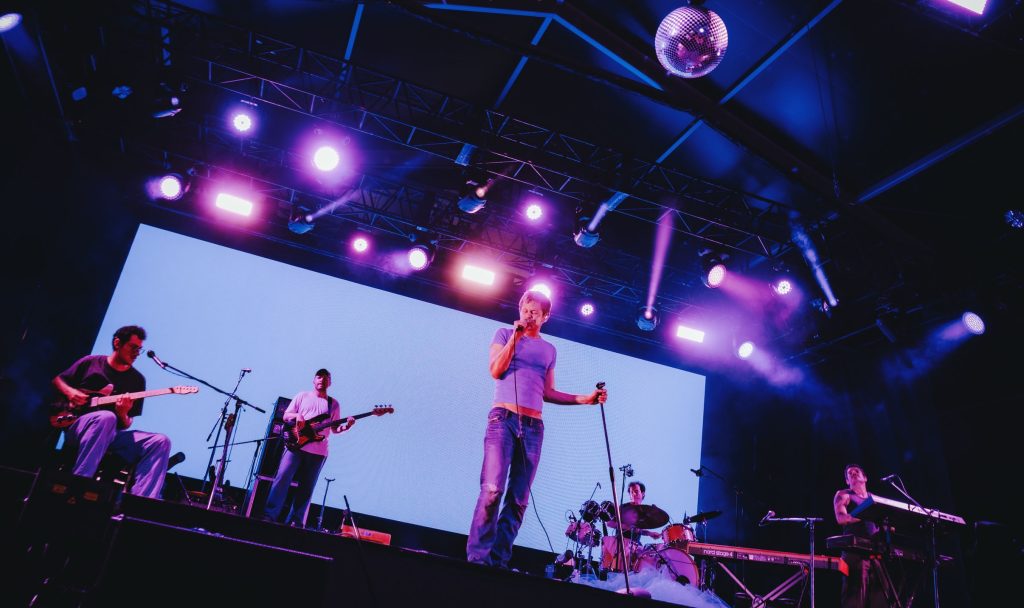
Twisting and writhing in line with the tenor of a song, he seemed almost elastic onstage, and the crowd absolutely adored it, cheering every dying swan routine and impossible arched back swoon. Skinniness was never so sexy.
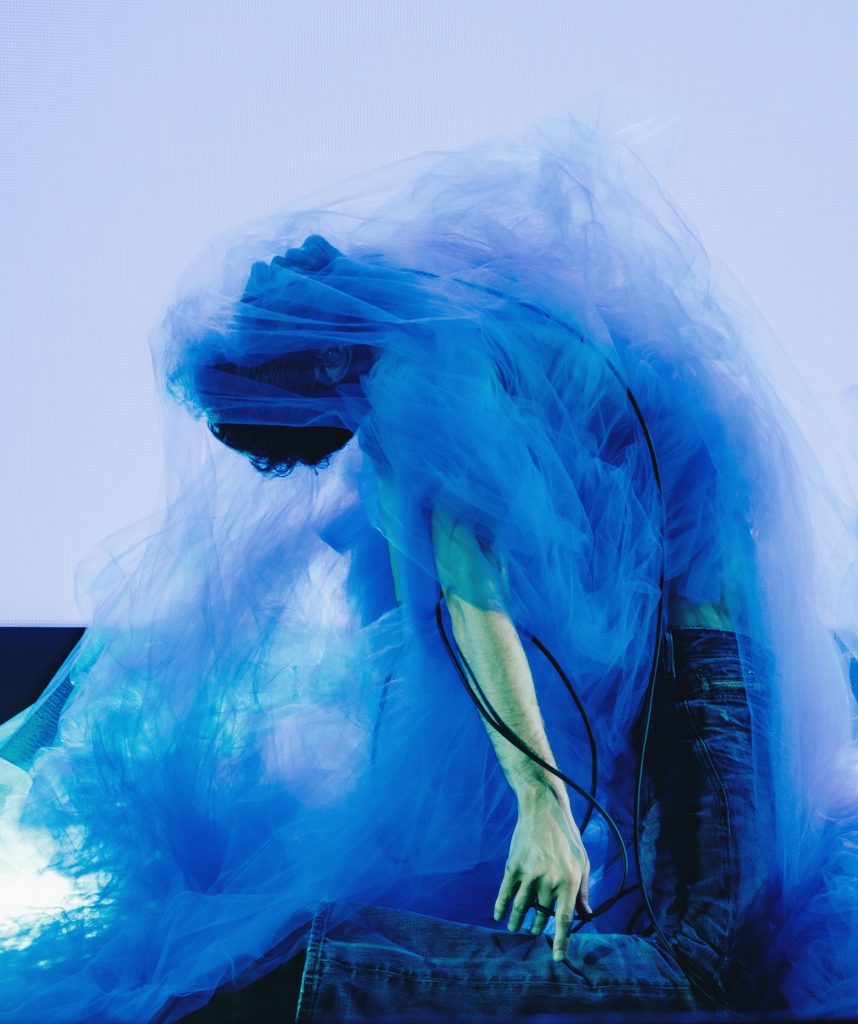
OK Go’s early evening set at the White Stage was well attended by a very polite crowd that was obviously into the American band’s punchy power pop, though it would have been hard to tell if you only heard the show and didn’t see the swaying, bopping bodies.
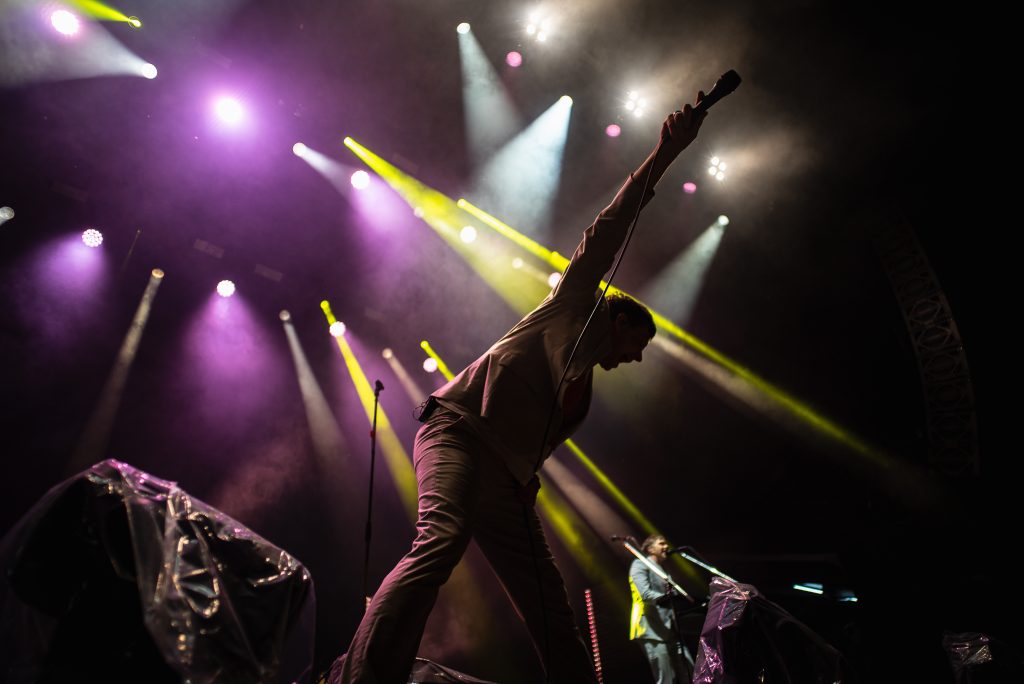
Ably assisted by bassist Tim Nordwind’s fine soprano backing vocals, the group’s aural component was studio perfect. Leader Damian Kulash tried to connect with the audience directly by asking if there were any questions. Some wise guy asked what their favorite Japanese food is and each member answered appropriately, though drummer Dan Konopka was the most honest: “Beer,” he said.

Apparently, there were electrical issues all day at the Green Stage, thus forcing Fred Again’s set to be pushed back by 90 minutes. We caught Ezra Collective’s set at the Field of Heaven. Though ostensibly a jazz group bassist-spokesperson TJ Koleoso insisted that the Field become a big dance hall, and they definitely brought the funk while trying out rock concert moves — getting the entire audience to squat and then jump up on cue, that sort of thing—that everybody was totally cool with. We only caught a bit of Fred Again’s set at the end, but though he’s categorized as a dance artist, Ezra got more bodies moving in our estimation.
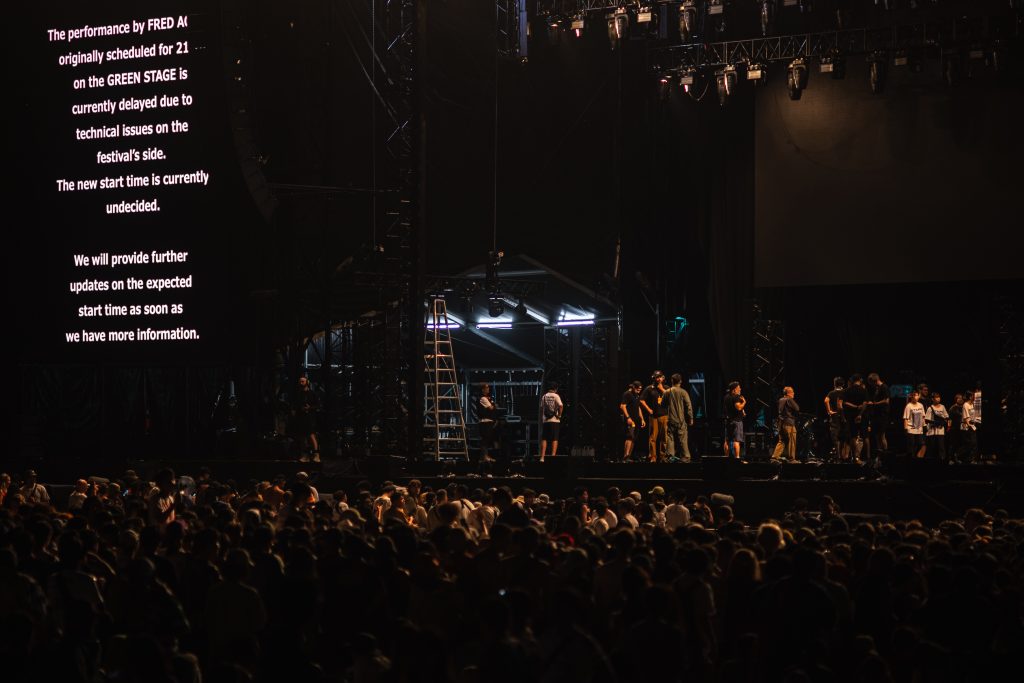
But the highlight of the day may have been Shintaro Sakamoto’s midnight gig at the Red Marquee. The shed was predictably packed and the self-effacing former Yura Yura Teikoku leader eschewed the psych rock his old band was famous for, concentrating solely on his solo material, which leans heavily toward yacht rock. A fantastic guitarist who can move from delicate melodic riffs to sky-high note-bending, he and his very able band just kept going from strength to strength, and all without the usual Japanese stage chit-chat. It was serious pop music, which means everyone left very happy.



